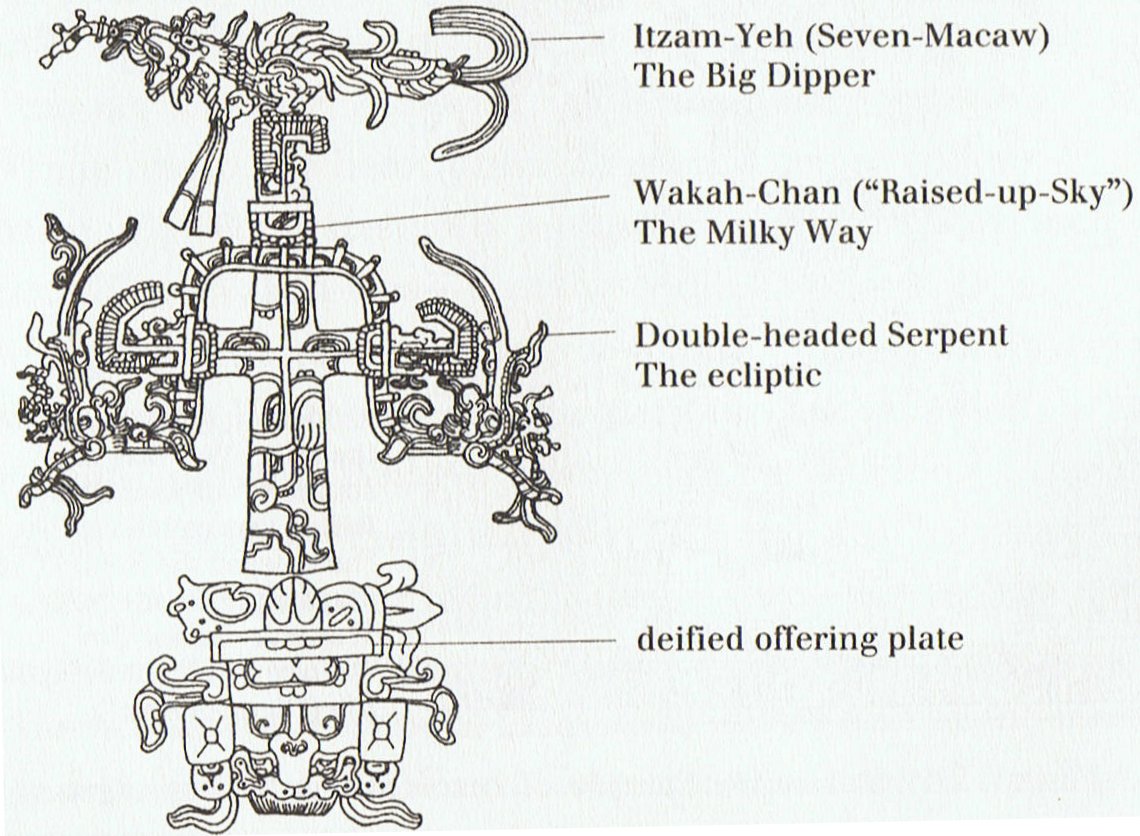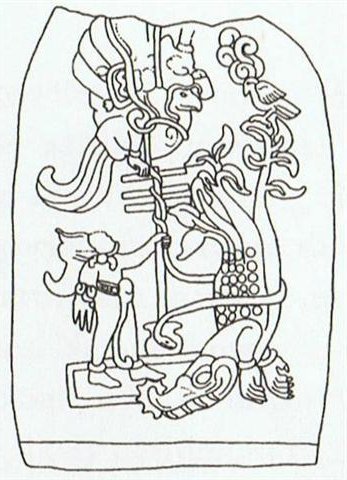The reason why there are only 3 foot prints could possibly be related to the absence of any footing when travelling through the air (in the preceding Rain God station): ... The Raven stole the skin and form of the newborn child. Then he began to cry for solid food, but he was offered only mother's milk. That night, he passed through the town stealing an eye from each inhabitant. Back in his foster parents' house, he roasted the eyes in the coals and ate them, laughing. Then he returned to his cradle, full and warm. He had not seen the old woman watching him from the corner - the one who never slept and who never moved because she was stone from the waist down. Next morning, amid the wailing that engulfed the town, she told what she had seen. The one-eyed people of the sky dressed in their dancing clothes, paddled the child out to mid-heaven in their canoe and pitched him over the side. He turned round and round to the right as he fell from the sky back to the water. Still in his cradle, he floated on the sea. Then he bumped against something solid. 'Your illustrious grandfather asks you in', said a voice. The Raven saw nothing. He heard the same voice again, and then again, but still he saw nothing but water. Then he peered through the hole in his marten-skin blanket. Beside him was a grebe.
'Your illustrious grandfather asks you in', said the grebe and dived. Level with the waves beside him, the Raven discovered the top of a housepole made of stone. He untied himself from his cradle and climbed down the pole to the lowermost figure ... The voyage of Raven is from top down to the very bottom, and the last station on his voyage means climbing down a 'housepole made of stone', which could correspond to the 'tree' (rakau) of Metoro and also to the 'monster tree' of the Rain God. Another picture is illustrative:
This 'tree' is probably the Milky Way and the figure standing at left, holding the 'Skeleton Tree' ('skeleton ribs', Mayan kankin) has to use his left hand because he has lost his right hand. Instead of a proper right hand he seems to have aquired the '3-fingered' feathers of a bird. It could symbolize - I suggest - that his right hand has become a 'bird', a quickly moving creature up in the air (manu rere). There is no substance in air (and neither in spirits) and the body of his hand (the hand of Tyr, or Mars the warrior) has disappeared into the jaws of the black wolf (Fenrir). Feathers indicate air and therefore also the gap between sky and earth created in spring. When the sky roof is uplifted to let in light it means a loss of contact between sky and earth. ... In the beginning were Rangi and Papa, Sky and Earth. Darkness existed. Rangi adhered over Papa his wife. Man was not. A person arose, a spirit who had no origin; his name was Rangitokona, the Heaven-propper. He went to Rangi and Papa, bid them go apart, but they would not. Therefore Rangitokona separated Rangi and Papa, he thrust the sky above. He thrust him with his pillars ten in number end to end; they reached up to the Fixed-place-of-the-Heavens. After this separation Rangi lamented for his wife: and his tears are the dew and the rain which ever fall on her. The pattern could allude to the different state of cosmos when the great 'bivalve' has been opened. With an opening accomplished at the end of the old year there is no longer simply 2 world levels ('up' and 'down') but 3:
The loss of life inside a bivalve is indicated by it not being closed. You should never try to eat what remains inside, it will make you sick. Its spirit of life (manu rere) has migrated (as if it was a hermit crab) and alighted down on 'earth'. In consequence earth has come alive again which can be observed by the multitude of growths (tupu). Rigel could represent the first corner of 'earth'. When Metoro said kua tupu te rakau he could have meant the Milky Way is changing its orientation so it will become like a standing great tree in the night sky. According to some it was Tane (the god of trees) who pushed the sky up, who separated Ragi and Papa. This happens in the solstice ('Janus') month June.  |





